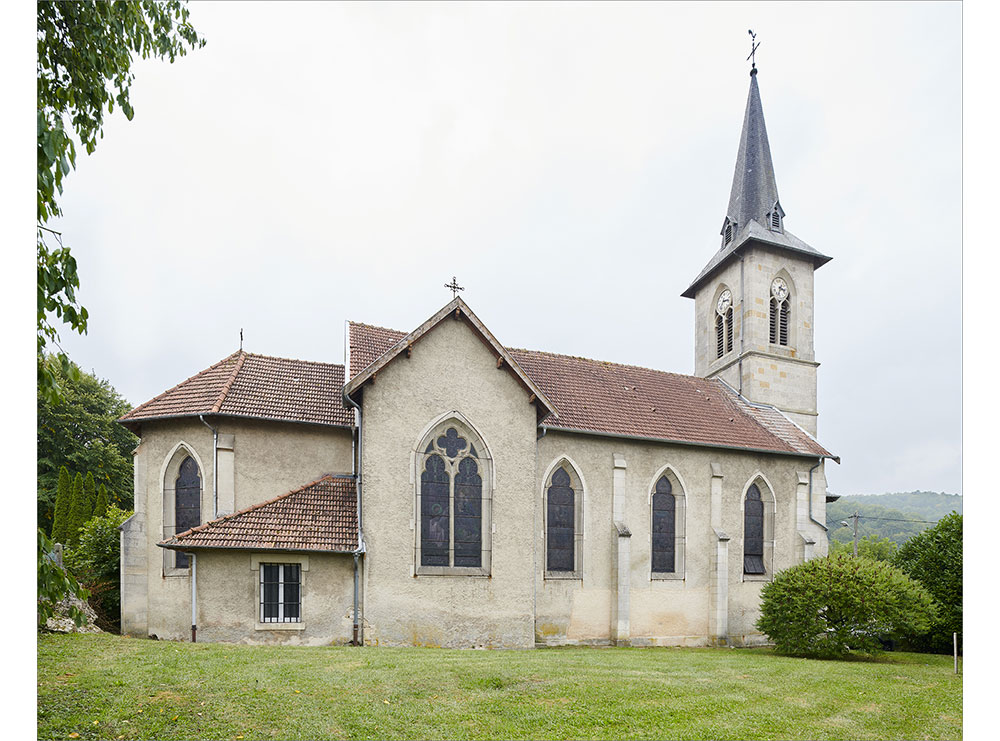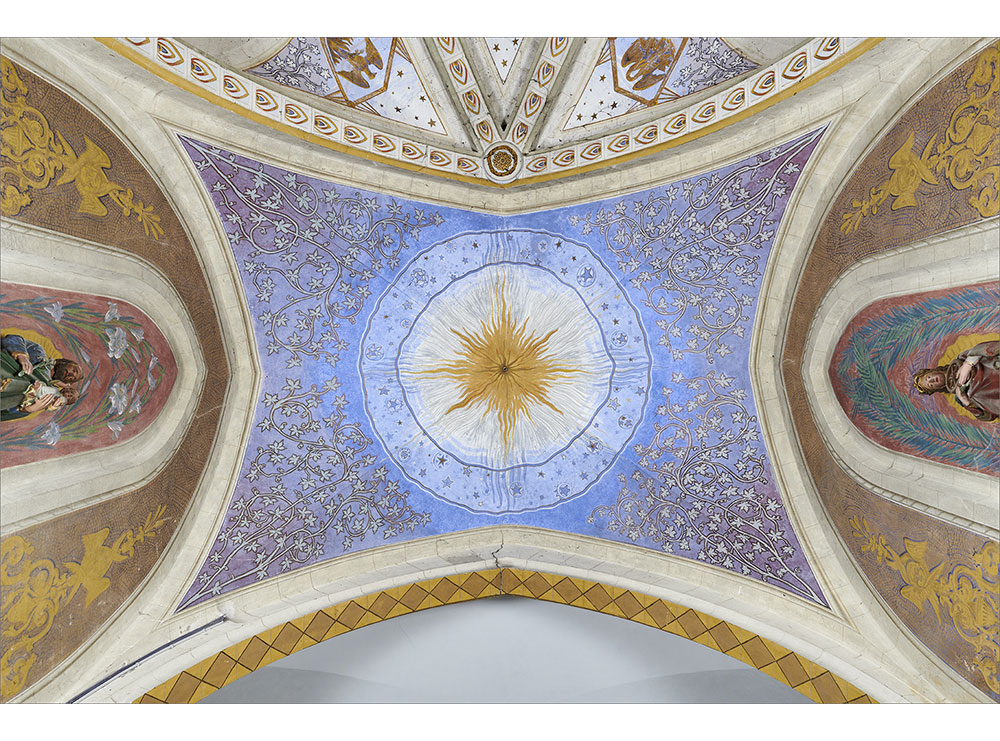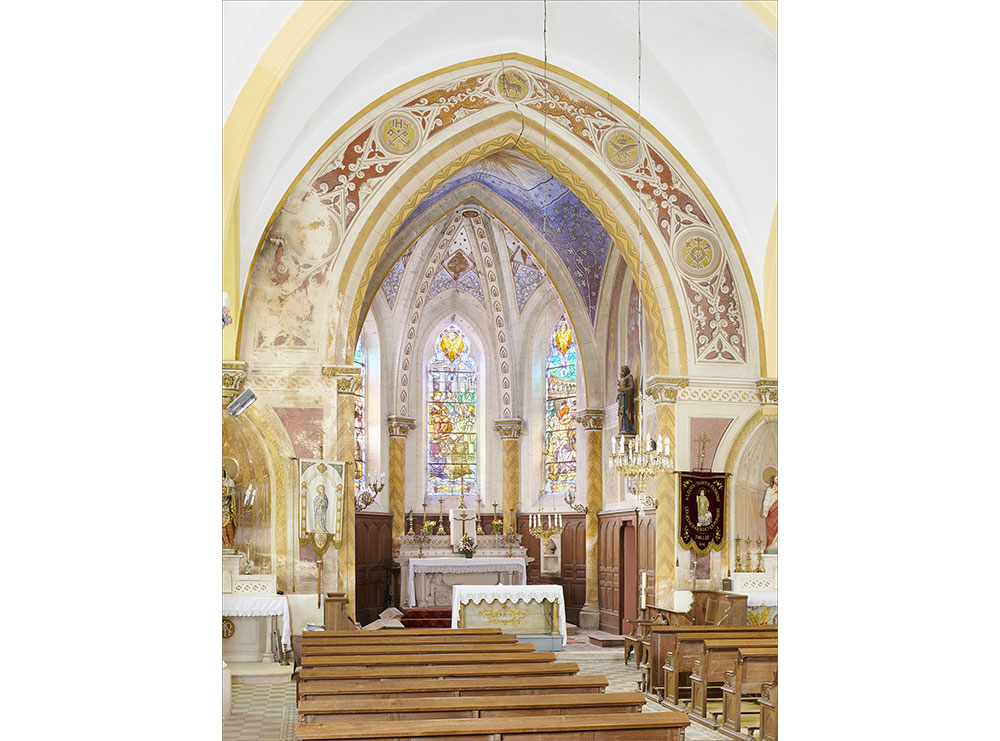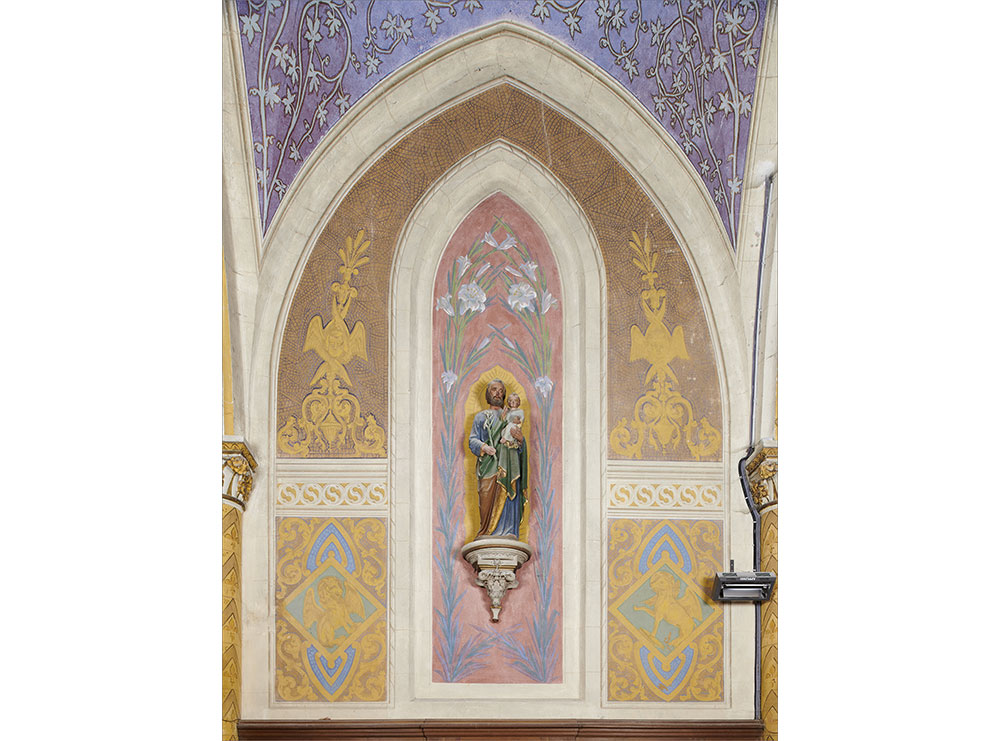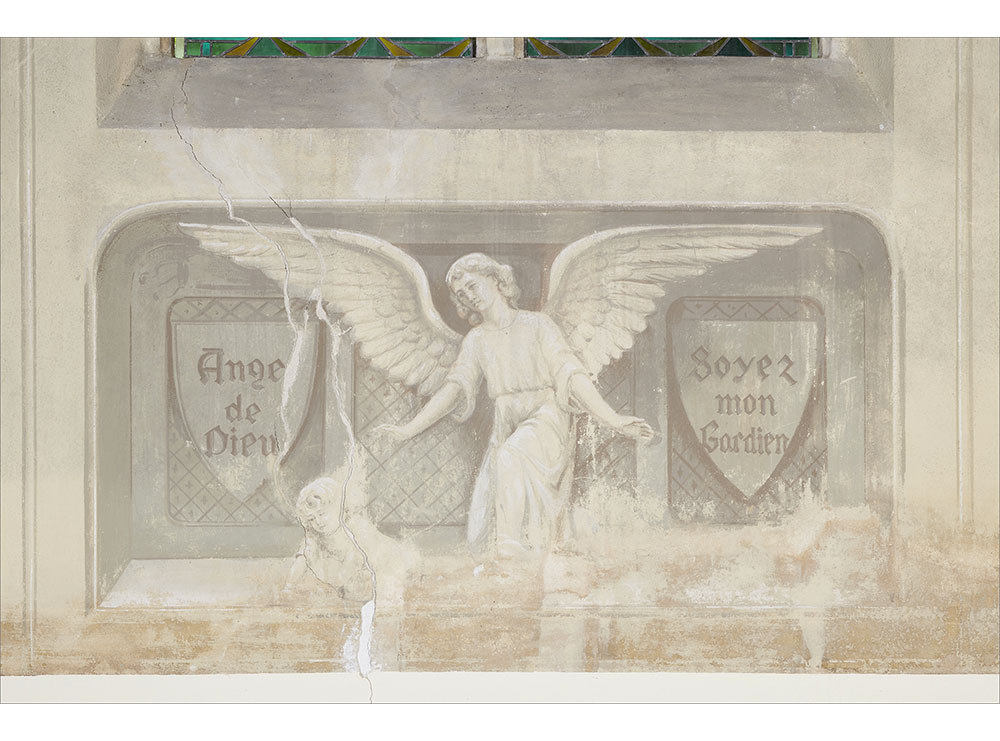Thillot, Church of St Abdon
This village, which experienced a difficult ordeal during the First World War, has two works by Donzelli: the monument to the dead on the Place de la Mairie, and the liturgical furniture and painted decoration in the church rebuilt by the architect Gaston Lemaire between 1926 and 1927 to replace the previous building which was destroyed.
Although the monument is signed by the artist and frequently mentioned in archive documents, the attribution of the paintings in the church to Duilio Donzelli is based on stylistic analysis. The decoration appears in the choir, on the triumphal arch and in the arms of the transept. On each vault, a sun surrounded by a starred ring appeared against a blue-violet background scattered with plant rinceaux. This decoration can still be seen in the choir and in the left arm of the transept, but in the right arm and at the crossing, it is covered by whitewash beneath which it can just be made out. The celestial elements, perhaps a reference to the Creation of the world, can also be admired in the churches of Maizey and Véry.
The triumphal arch and the vault over the apse bear numerous Christian symbols: a Mystic Lamb, a monogram of Christ (“IHS”), and a phoenix and a pelican, the fabulous birds which evoke the sacrifice and then the Resurrection of Christ and which can be seen in Seuzey and Kœur-la-Grande. A Tetramorph was placed on the walls of the choir; each Evangelist is shown in a lozenge, beneath the statue niches. In the upper parts of the transept, coats of arms were reproduced: on the left, those of Pope Pius IX (1922-1939), and on the right, those of the bishop of Verdun, Bishop Ginisty (1914-1946).
The walls of the transept are decorated with panels in grisaille: on the right, Joan of Arc portrayed as a peasant from Lorraine (difficult to identify) inspired by the statue sculpted by Henri Chapu* at the end of the 19th century, and on the left, an angel blessing a child. This technique of painting in grisaille was also used to decorate a chapel in the church of Creuë showing Eve and the Virgin. The theory that the decoration in this church dates to the beginning of the 1930s can be put forward on the basis of this stylistic parallel with the paintings in Creuë, which were produced in 1933.
The three altars are probably also Donzelli’s work: the side altars are similar to those in the churches of Haudiomont and Haumont-lès-Lachaussée in terms of the structure and decoration. On the lower part of the high altar, a dead Christ sculpted in high relief is very expressive. Liturgical furniture, mural paintings and the monument to the dead on the Place de la Mairie form a significant ensemble by the artist in the village.
* the statue of Joan of Arc in Domrémy was created in marble in 1871, it is kept at the Musée d’Orsay. The model was then adapted in materials of all kinds.
IHS: abbreviation and imperfect transliteration of the name “Jesus” in Greek, which was later used within the Church as a monogram for Iesus Hominis Salvator, which means “Jesus, saviour of men”.
Mystic Lamb: symbol of Christ that recalls Christ’s sacrifice and the words of John the Baptist: “Behold, the lamb of God, who takes away the sin of the world” (John 1:29).
Pelican: according to the Church, the pelican is the incarnation of Christ sacrificing himself for the salvation of mankind, because it was believed in the Middle Ages that the male bird pierced itself with its beak in order to feed its young with its blood and save them.
Phoenix: this mythical bird, which is consumed and reborn from its own ashes, symbolises Christ resurrected.
Tetramorph: a representation of the four evangelists in their allegorical form (man for Matthew, an eagle for John, a bull for Luke and a lion for Mark) which is inspired by Ezekiel’s vision (Ez 1:1-14) and the description of the four living beings of the Revelation.

